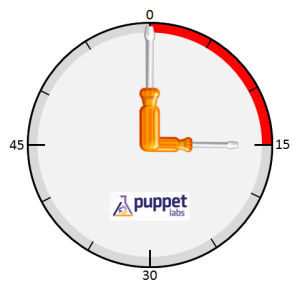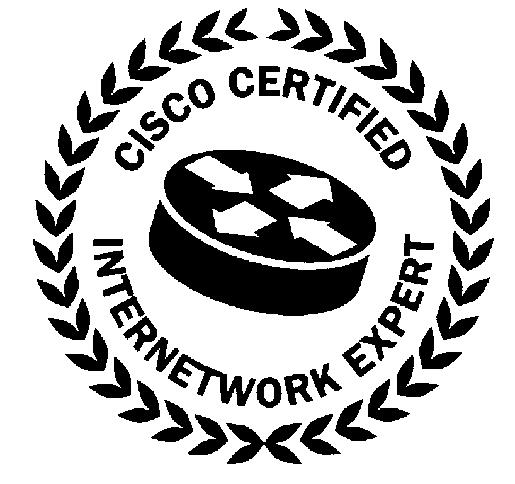
Last week the delegates at Networking Field Day 5 met with Cisco, and we had a great set of presentations and discussions throughout the day. None however equaled the discussion on “Openflow vs Cisco onePK” at the end of the day for the sheer volume of uncompromisingly black and white opinions that were expressed in order to score points in that argument.
The problem for me is that at some point, there’s a danger that taking the hyperbole too far* could cause your argument to actually sound like debating trickery rather than a reasoned position. And so it was for me yesterday listening to the argument that Cisco should offer a basic switch that just supports OpenFlow, rather than wasting time developing an offering supporting onePK. The parallel given was that people tend to buy switches with way more features than they need (or too high a software feature set), so it is better to offer something minimal that is more appropriate.
(*) I know … refer me to the Department of Tautology Department for punishment
Unused Features
Actually I’m in agreement that people tend to buy devices with more features than they need. One argument put forward is that such behavior is because customers are stupid. I don’t believe that though (for the most part). My feeling is that customers simply don’t know what they need today, let alone in the 12-36 month timeframe, and they want to protect their investment by buying a product that has the flexibility to support whatever they need in a fast changing technology environment where new features appear all the time. They might not choose to license those features initially, but it gives them warm fuzzies to know that the capabilities are there, and that enabling them is going to be a simple software switch or license upgrade.
Short term, this means that in theory you are over-buying; and why do that (the argument was made) when you can just replace the hardware for a more feature-filled device when the time comes? In fact, my quote of the day from this argument was that it would take something like “15 minutes, puppet and a screwdriver” to replace a low-function switch with one that does more. Rhetoric, much? Funny as heck, though 🙂
Reductio Ad Absurdum
My opinion – and I think I’d go so far as to say this is really a rather obvious statement of fact – is that any hardware migration requires a cost exceeding that of the hardware itself. The process of selecting the new hardware takes time, as does the process of ordering/paying for it, receiving it, and soak testing it before putting it into production. You may need to run new power feeds too. Then to make the change itself, do we shoot for a rip and replace (remove old switch, insert new one, re-cable), or a migration (add new switch, migrate connections over). We dare to dream that there would be no cabling required, but either way the new switch needs at least some level of configuration put on it.
But wait, the port (and other) configuration can be handled by puppet! Ah – but we opted to install a basic switch that only supported Openflow – we didn’t want the more feature-rich model that supported the full Cisco onePK feature set, right? Sorry, no puppet for you. The replacement switch might support puppet mind you, but since the old one didn’t there would be nothing to reuse, and somebody will need to set up a puppet master, create the appropriate resources and manifests, and map the current configuration to the new switch correctly. We may not have port to port parity either from old to new switches, so there will be some more migration work there too. We should also figure in that if we perform this upgrade within a couple of years of the original installation, we probably haven’t finished depreciating our existing assets yet either.
The reality is that there are personnel and material costs involved in upgrading hardware, not just the cost for the hardware itself.
Balance Your Needs
Underlying the hyperbole, there may be a more serious issue though. There’s always a balance required between buying just enough or buying too much. As with so many arguments there is no black or white answer; it’s all shades of grey. Sometimes buying the minimum is the right thing to do. Other times, buying the top of the range even if you aren’t ready to use all the features yet is the right thing, especially if you have an inkling of where you might be going in the future. In other words there’s no right and wrong here, and perhaps Cisco would be best placed to offer both ends of the spectrum, and something in between as well.
15 Minutes, Puppet and a Screwdriver
Meanwhile, next time I have a migration to do, I think I’ll make sure and get a bid from anybody that believes the 15 minute plan – and I’ll only budget to pay them for 15 minutes of their time per switch. Heck, I’ll even supply the screwdriver.
Watch The Discussion
You can watch the full discussion with Cisco here:
It’s a bit long, but it’s not short of opinion, and I suspect I’ll be revisiting this discussion in a future post.
Disclosures
Cisco was a paid presenter at Networking Field Day 5, and while I received no compensation for my attendance at this event, my travel, accommodation and meals were paid for by NFD5. I was explicitly not required or obligated to blog, tweet, or otherwise write about or endorse the sponsors, but if I choose to do so I am free to give my honest opinions about the vendors and their products, whether positive or negative.
Please see my Disclosures page for more information.




“The parallel given was that people tend to buy switches with way more features than they need (or too high a software feature set)”
Is this a new cognitive bias? Maybe we can call it the Cisco-West Virginia Bias.
A lot of great discussion there, and I think I agree with your comments in this post, but when I watch that video, all I can think of is:
http://cdn.memegenerator.net/instances/250×250/31259140.jpg